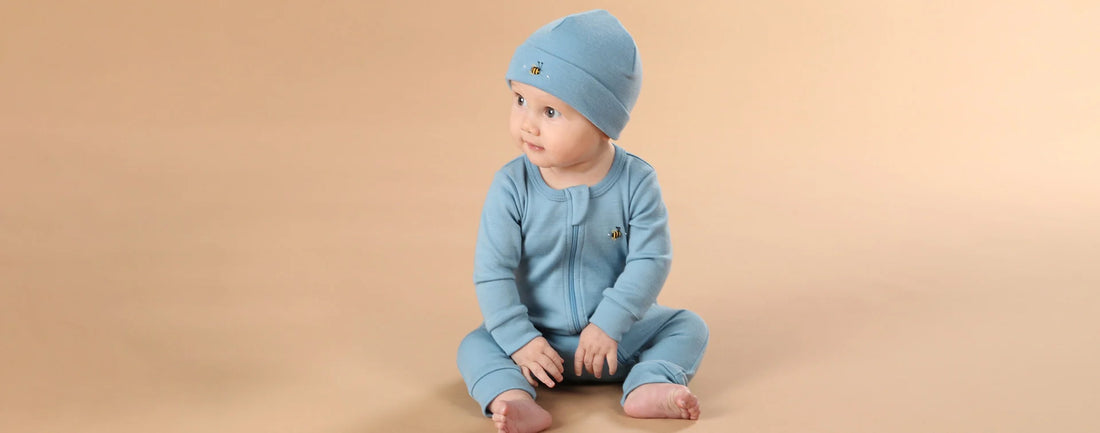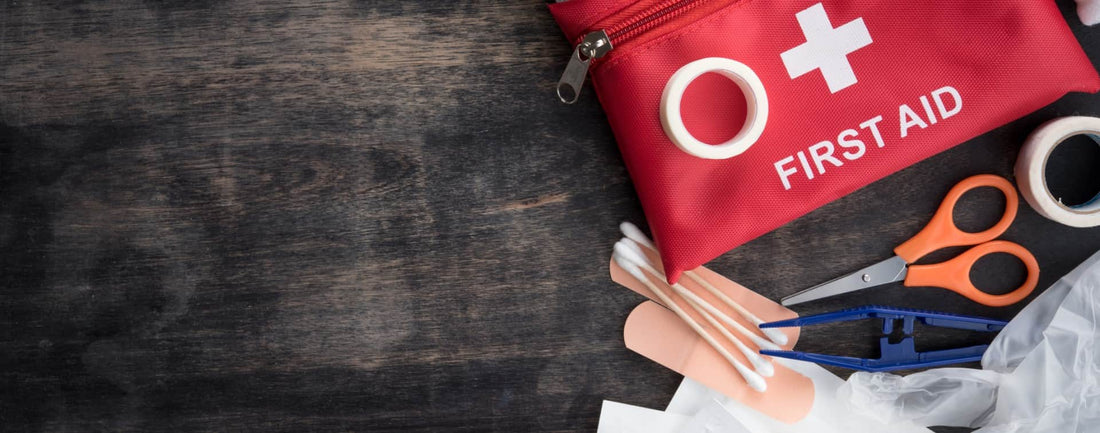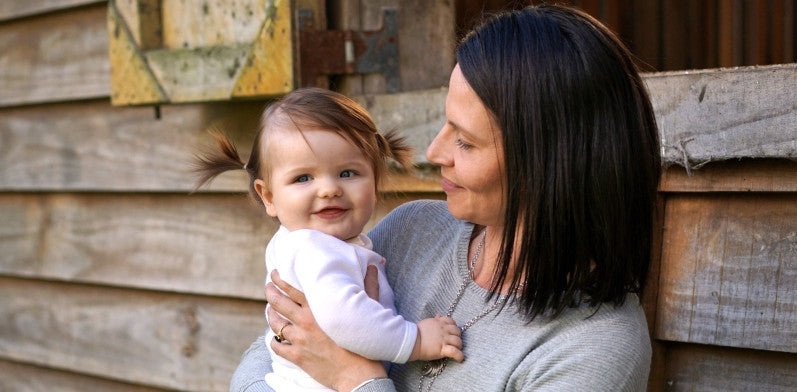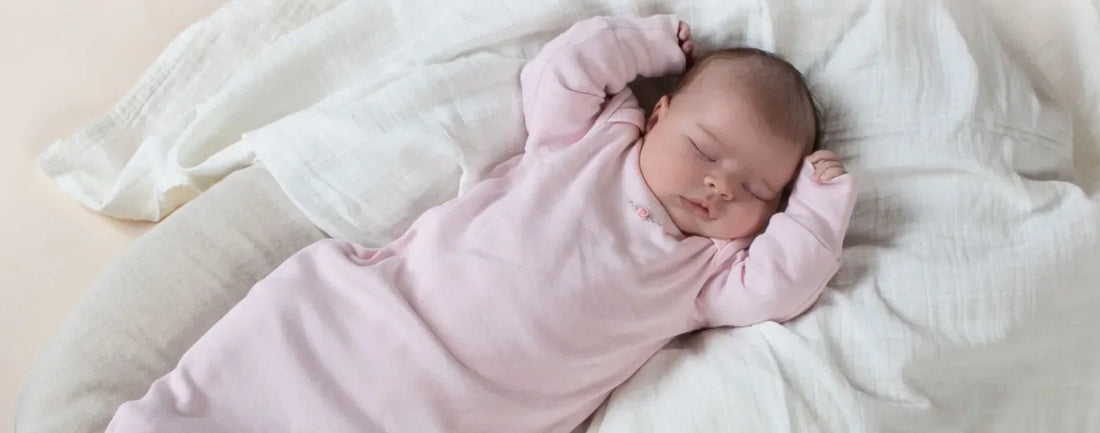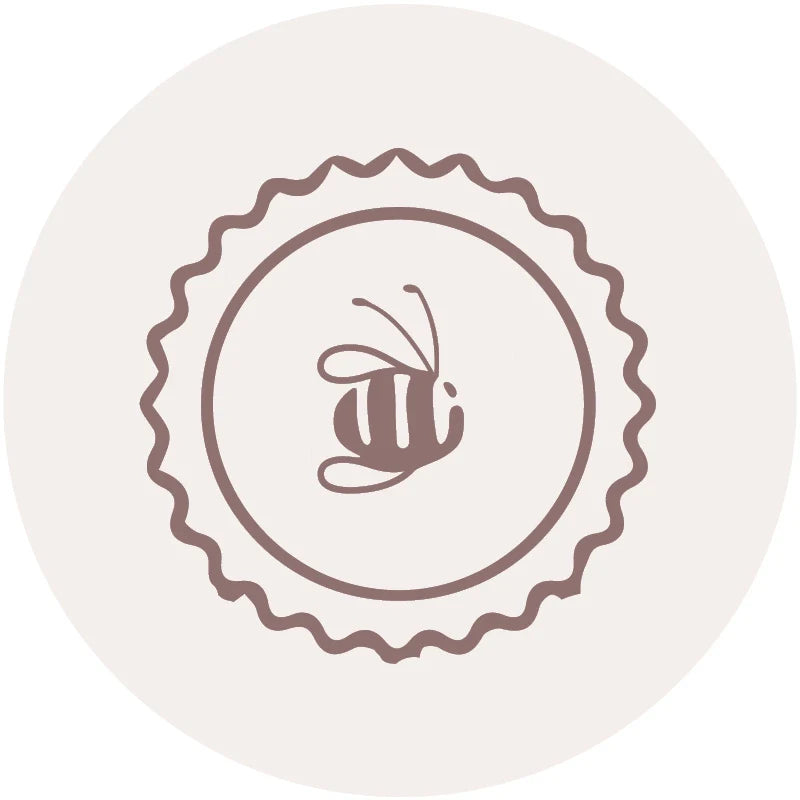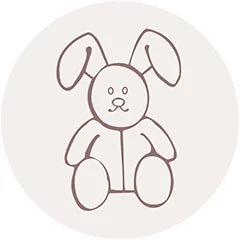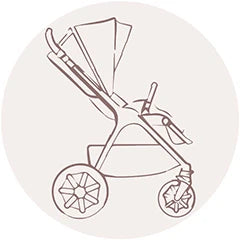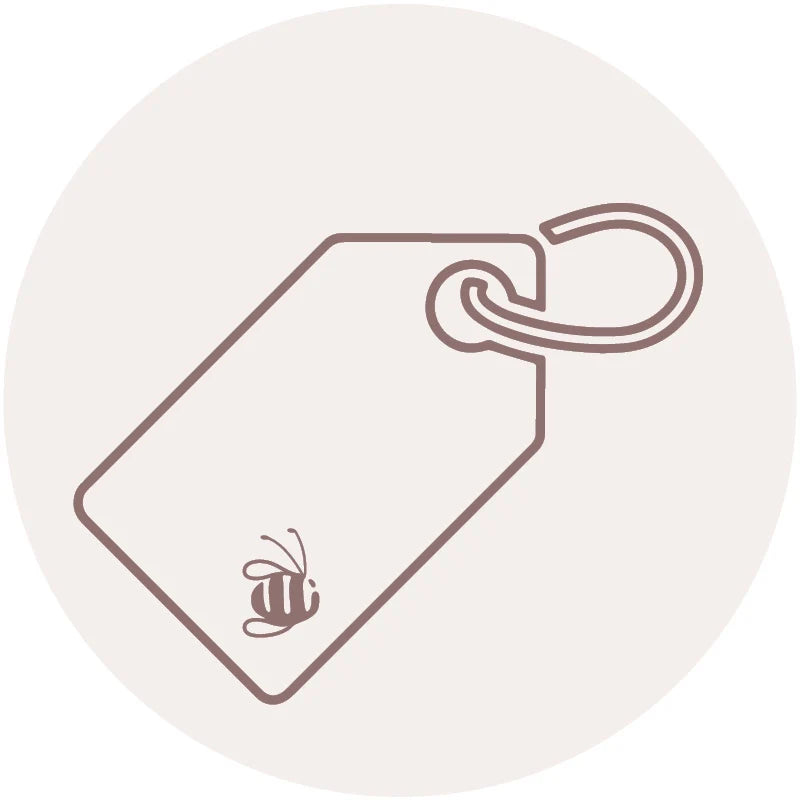Silicone Nasal Aspirator
Silicone Nasal Aspirator
SKU:SGE042
Clothing Prem to 18 Months
| Size | Age Guide | Weight | Height |
|---|---|---|---|
| Premature | Premature or Small Newborn | Up to 4Kg | Up to 55cm |
| Newborn | 0-3 months | 4-6Kg | Up to 62cm |
| 3 Month | 3-6 months | 6-8Kg | Up to 68cm |
| 6 Month | 6-12 Month | 8-10Kg | Up to 76cm |
| 12 Month | 12-18 Month | 10-12Kg | Up to 84cm |
| 18 Month | 18-24 Month | 12-14Kg | Up to 92cm |
Clothing 2 to 6 Years
| Size | Age Guide | Height | Chest | Waist | Hip |
|---|---|---|---|---|---|
| 2 Year | 2-3 Years | Up to 100 cm | 56 | 51 | 58 |
| 3 Year | 3-4 Years | Up to 105 cm | 58 | 53 | 60 |
| 4 Year | 4-5 Years | Up to 110 cm | 60 | 55 | 62 |
| 5 Year | 5-6 Years | Up to 115 cm | 62 | 57 | 64 |
| 6 Year | 6-7 Years | Up to 120 cm | 64 | 59 | 66 |
Beanie Size Guide
| Size | Head Circumference | Age Guide |
|---|---|---|
| Premature | 31-35 cm | Premature or Small Newborn |
| Newborn | 35-40 cm | Newborn |
| Small | 40-43 cm | 3-6 Months |
| Medium | 43-47 cm | 6-18 Months |
| Large | 47-52 cm | 18-3 Years |
Sunhat Size Guide
| Size | Head Circumference | Age Guide |
|---|---|---|
| Newborn | 37-40 cm | Newborn |
| Small | 40-43 cm | 3-6 Months |
| Medium | 43-46 cm | 6-12 Months |
| Large | 46-49 cm | 12-24 Months |
| Xtra Large | 49-54 cm | 2-4 Years |
Sleep Pods Size Guide
| Size | Weight | Age Guide | Measurement(Back to Hem) |
|---|---|---|---|
| Newborn | 0-6 kgs | 0-3 Months | 60.5 cm |
| Small | 0-8 kgs | 3-6 Months | 66 cm |
Booties Size Guide
| Size | Age Guide |
|---|---|
| Newborn | 0-3 Months |
| Small | 3-6 Months |
| Medium | 6-12 Months |
| Large | 12-18 Months |
Pretty Brave Baby
| Foot Length (mm) | Insole Length (mm) | EU | UK | Age | INT |
|---|---|---|---|---|---|
| 95-104 | 110 | 16/17 | 2 | 0-6m | S |
| 104-114 | 118 | 18 | 3 | 6-12m | M |
| 114-123 | 127 | 19/20 | 4.5 | 12-18m | L |
| 123-137 | 142 | 21/22 | 5.5 | 16-22m | XL |
Pretty Brave 1st Walker
| Foot Length (mm) | Insole Length (mm) | EU | UK | Age |
|---|---|---|---|---|
| 114-120 | 125-128 | 19 | 3 | 1 yr |
| 120-126 | 132-135 | 20 | 3.5 | 1-2 yrs |
| 126-132 | 138.5-141.5 | 21 | 4.5 | 1-2 yrs |
| 132-138 | 145-148.5 | 22 | 5 | 2 yrs |
Crywolf Swim Nappy
| Size | Length (waist to crotch) | Crotch Width (side to side) |
|---|---|---|
| 0-1 yr | 1-2 yrs | |
| 37 | 38 | |
| 14.5 | 15.5 |
Crywolf Rash Suit
| Size | Length (back neck to crotch) | Chest (arm to arm) | Waist (side to side) | Sleeve (neck to cuff) | Neck Opening(diameter) |
|---|---|---|---|---|---|
| 6-12 Months | 1 yr | 2 yrs | 3 yrs | ||
| 40 | 42 | 44 | 46 | ||
| 25 | 26 | 27 | 28 | ||
| 24 | 25 | 26 | 27 | ||
| 30 | 31.5 | 33 | 34.5 | ||
| 13.25 | 13.25 | 13.8 | 14.3 |
In stock
Couldn't load pickup availability
Overview
Overview
Haakaa's Silicone Penguin Nasal Aspirator is the quick, quiet, and efficient way to clear your little one's stuffy, runny nose! The aspirator is made of soft, food-grade silicone and sucks up mucus with a gentle squeeze, clearing your baby's airways and helping them breathe easier.
This aspirator features a dual-valve design that ensures no backflow into your child's nose, and two tip sizes to choose from - making it ideal for all noses! It's simple to use and fully detachable for thorough cleaning so no mould or bacteria will hang around. The aspirator body is transparent with measurement markers on the side, so you can see how much mucus has been collected. It's lightweight, portable and ready for any snotty emergencies while you're out and about!
The Tube Cleaning Brush is designed to get into the tiny nooks and crannies of the nasal aspirator, so no nasties can grow in between uses!
Technical Specification
Technical Specification
User Guide
User Guide
Delivery and Returns
Delivery and Returns
- Delivery: Free within NZ on orders over $100 (excluding bulky items) or $8 standard shipping
- Returns: Accepted within 14 days of receipt with proof of purchase
- Some items are excluded from returns including sale items, hardware, car seats, prams, monitors and personal items - please click here for the full list.
Share this product
Recently Viewed Products
Related Blogs
Protecting your baby from the cold this Winter
How to Dress Your Newborn in Winter When winter sets in, keeping your newborn snug and comfortable becomes a top priority. Dressing baby in natural, breathable layers helps to regulate their temperature and reduce the risk of overheating or getting too cold. At the heart of this is Merino wool – a super-soft, temperature-regulating fibre that’s perfect for delicate skin. Merino is the ideal base for your baby’s winter wardrobe. It works to insulate when it’s cold and cools when it’s warm, keeping baby cosy without the need for bulky layers. At the same time, organic cotton can be used alongside Merino for gentle layering or in warmer indoor settings, giving you flexibility as the temperature shifts. Why Merino is the Best Choice for Winter Unlike synthetic fibres, Merino is breathable, moisture-wicking, and ultra-soft, making it an excellent next-to-skin layer. It naturally helps regulate body temperature, which is essential in those early weeks when your baby can’t do it themselves. Cotton is also a trusted option, especially for sensitive skin. While it doesn’t insulate quite like Merino, it’s great for layering over Merino or wearing in warmer rooms or during nap times when baby doesn’t need as much warmth. What to Dress Baby In During the Day At Home When indoors, comfort is key. A Merino bodysuit or baby grow offers the right amount of warmth without overheating. For mild days or heated rooms, you might choose a cotton bodysuit as the base, layering a Merino cardigan or leggings on top. Combining the two materials gives you the best of both worlds – Merino for temperature regulation, cotton for softness and breathability. Heading Out When you're on the go, think in layers. Start with a Merino base layer, followed by a cotton or Merino baby grow. Add mittens, a beanie, and a warm blanket in the pram or carrier. A simple rule: dress baby in one more layer than you’re wearing. Merino accessories like socks and hats are especially good for keeping warmth in, as babies lose a lot of heat through their head and feet. Dressing Baby for the Car For car rides, avoid bulky outerwear that interferes with the car seat harness. Dress baby in Merino and/or cotton layers, and use a blanket over the harness if needed. Merino’s warmth means you don’t need excessive layers, making it ideal for safe travel. How to Dress Your Baby for Sleep The ideal room temperature for baby’s sleep is between 16°C and 20°C. Use breathable Merino sleepwear and a Dimples Sleeping Bag suited to the room’s temperature (based on TOG rating) to help keep your baby warm and safe without overheating. Sleepwear suggestions: 16°C – Duvet Lined Sleeping Bag (TOG 2–3) over a Merino baby grow, cotton or Merino bodysuit, and socks. 18°C – Merino Lined Sleeping Bag (TOG 1.5–2.5) with a cotton bodysuit and Merino baby grow. 20°C – Summer Sleeping Bag (TOG 1–2) over a lightweight cotton or Merino bodysuit. Using a cotton bodysuit underneath Merino layers is a great option if your baby tends to run warm, or if your home is well heated. Why Layering Matters Layering natural fibres gives you the flexibility to adjust to your baby’s needs throughout the day. Merino next to the skin helps regulate their temperature, while cotton adds comfort and light coverage. If you’re unsure what your baby needs, check the back of their neck – warm (but not sweaty) means they’re just right. Adjust layers as needed. Why Choose Dimples At Dimples, we’ve been lovingly making New Zealand Merino and organic cotton clothing for over 30 years. Our Merino comes from trusted NZ sources, designed with your baby’s wellbeing in mind – soft against their skin, naturally breathable, and kind to the planet. Whether you’re layering for winter sleep or everyday wear, our Merino baby grows, bodysuits, sleeping bags, accessories, and blankets are crafted to keep your little one comfortable, safe, and warm through every season. Cotton remains a wonderful companion to Merino, offering softness and flexibility in your baby’s wardrobe. Together, they make a perfect pair. Explore the full range of Dimples Merino and Organic Cotton essentials online or in store.
Learn moreMaking a Baby First Aid Kit
10 essentials for your baby’s first aid kit Be ready for emergencies and trips away You’ve Pinterested your dream nursery, sussed the decor and ticked off all the big purchases like a cot, pram and capsule. The reality of being responsible for a tiny person can take a while to sink in, and usually, a first aid kit for your baby isn’t top of mind. While you might have a couple of items like a thermometer and tiny nail clippers on your radar, a comprehensive first aid kit will set you up for years to come. It’s also easy to pop in your bag for trips away. Be sure to include these ten essentials: Thermometer – a thermometer you can trust can give you so much assurance. A non-contact thermometer like the NUK Baby Flash Thermometer makes the process super easy, and can even be used to see how hot your baby’s bath or food are too! Nasal decongestant and saline spray – unfortunately, it's only a matter of time before your little one gets their first cold and it usually means trouble feeding and sleeping. Since it’s a good few years until they can learn to blow their nose (usually around aged 2), a nasal decongestant combined with a saline nasal spray can help de-stuff and make feeding and sleeping a little easier. Nail clippers – cutting tiny nails for the first time can be a truly frightening experience and even worse, they seem to grow at lightning speed! Having some specific clippers on hand to keep nails short will prevent him from scratching himself. Emergency contacts – avoid scrambling on your phone by keeping important numbers like PlunketLine , Healthline and your local GP in an easy-to-find spot in your first aid kit – consider taping them to the inside of the lid. Pain relief – some form of over-the-counter pain relief such as liquid paracetamol or ibuprofen in your baby first aid kit can come in handy at all hours of the day or night. While you should always consult a professional (either your GP or an after-hours service) before administering any type of medicine, having this at the ready for fevers and minor aches and pains saves a trip to the pharmacy. An oral syringe – getting medicine into a baby can be tricky. The Haakaa Oral Syringe is an affordable, reusable syringe that is easy to use and easy to clean. Tweezers – even babies can get splinters! Rubbing alcohol swabs – grab a stash of these sterilising wipes to keep thermometers, tweezers and scissors clean. Plasters and antiseptic spray – even before they’re on the move, cuts and scrapes can happen. When they start moving, cuts and scrapes seem to happen every day! Disinfecting these and covering them with a small plaster will help them heal much faster. Gas relief drops – when burping doesn't seem to cut it, try infant gas relief drops. Learn more – take a course In addition to a well-stocked first aid kit for your baby, going along to a course specifically designed for dealing with littlies in an emergency is a great investment. Organisations like Plunket and Red Cross regularly hold affordable short courses designed to give you the confidence and basic skills needed to deal with emergencies until help arrives.
Learn moreTemperature Control and Sleep
Hot and cold – helping your baby sleep comfortably We all know how much temperature affects sleep. Too hot and you’re tossing the covers off, too cold and you’re hunting for another blanket. For babies, who are still learning to regulate both their body temperature and sleep patterns, the impact can be even greater. If they’re too warm or chilly, they might struggle to drift off – or wake more often through the night. The good news is you can help keep your baby at a comfortable temperature with the right mix of clothing, bedding, and room adjustments, making it easier for them to settle and stay asleep. Why temperature matters Our bodies can regulate internal temperature, but during deep sleep, that process slows down. This means a room that’s too hot or too cold can cause night wakings. For babies, the ideal room temperature is around 18°C – it might sound cool, but a lower core temperature is linked to better sleep, while warmer conditions often mean more restlessness. A warm bath before bed can also help. While it seems backwards, the water on your baby’s skin will cool them down after the bath, helping them start the night at a comfortable temperature. Ways to manage temperature Heaters, fans, air conditioning, and the right bedding can all help keep things steady through the night. If you have a thermostat, set it to 18°C and let it do the work. If not, you can buy a plug-in thermostat for your heater to help maintain consistency. Merino – your sleep-time secret When it comes to baby sleepwear, merino wool is a year-round winner. Naturally breathable and temperature-regulating, it helps keep your baby comfortable in both warm and cool conditions – and research shows it can even help them sleep longer. In winter, use merino layers under a merino sleeping bag or sleepwalker. In summer, lighter cotton or merino sleepwear with a lighter weight sleeping bag is usually enough, depending on the temperature where you are. Sleeping bags are especially useful as they can’t be kicked off like blankets, keeping your baby covered all night. Choose one with a weight (or TOG rating) that suits the season. Spotting temperature troubles Signs your baby might be too hot: Waking often Sweaty neck or back Damp hair Rapid, shallow breathing If you notice these, remove a layer of clothing, switch to a lighter sleeping bag, improve airflow, or lower the room temperature. If your baby seems uncomfortably hot, check for fever and use a cool, damp cloth on their forehead and back. Signs your baby might be too cold: Moving around the cot more than usual Rolling onto their stomach during sleep Frequent short naps Early morning waking (around 5am, when body temperature naturally dips) If this happens, add a layer, switch to a warmer sleeping bag, or adjust the room temperature. Getting the temperature right won’t solve every sleep challenge, but it’s one piece of the puzzle that can make nights smoother for everyone. Click here to shop our full range of merino.
Learn moreNewborns & Sleep: What to Expect and Survival Tips
Bringing a new baby home is one of life’s most beautiful - and exhausting - adventures. In this blog, Family Sleep & Wellness Coach, Lauren Moran from Little Dreamers, shares her expert advice on newborn sleep in the fourth trimester. With a warm, realistic approach, she helps parents feel empowered, informed, and supported through those early weeks, offering practical tips for creating a nurturing sleep environment and caring for yourself, too. Newborns & Sleep: What to Expect and Survival Tips By Lauren Moran from Little Dreamers https://www.littledreamers.co.nz/ Instagram: @little.dreamers.nz Congratulations parents! Whether this is your first or fourth bubba in your beautiful family, there is so much that can still feel overwhelming (or it’s a memory you’ve blanked out from last time!), but we are here to reassure you in those early days. Also known as the fourth trimester, those first 12 weeks following birth while trying to navigate your baby’s feeding and sleeping patterns can be quite the whirlwind. This blog is designed to help empower you, educate you, and normalise newborn sleep so that you feel confident to understand and support your little love. Let’s start this journey with “there is no such thing as bad habits when it comes to supporting your baby”. Yes, you heard that right! No such thing. Forget what social media, society or family/friends tell you. You do what works best for you and your family. There may come a time when those ways no longer work for you, which is totally fine, and we can change that. As you step into this new season remember you are nothing short of amazing and your little one is lucky to have you. Sleep is not only a necessity for your baby, but also you! We all need it. Sleep enables the body to repair itself, replenish those energy levels and regulate brain functions. When I have had more sleep, I feel like a better person showing up for myself and my family. It positively impacts our emotional and physical well-being too. So what can you expect in that fourth trimester? It is a busy, yet wonderful whirlwind of events that can bring about so much change both physically and emotionally. Feeling like you need to just cry? Go for it! Don’t know why? Many of us don’t! Your littlest love is adapting to life earthside and you are recovering from growing them and bringing them into this world. Offering love, care and comfort is exactly what’s needed for you both. With emotions running at an all-time high, it is important to focus on yourself too. I vividly remember my post-natal midwife coming for her first appointment and the first thing she said was that she was there for me. As a first-time mum I was slightly confused as I thought she would be looking at my daughter and making sure she was okay – and she did just that, but also had her focus on me. It is incredibly important to prioritise self-care during this time. That fourth trimester can be so overwhelming so making sure you prioritise your own body and mind will be key. It certainly may come with a feeling of guilt, just know that these are all very normal feelings & thoughts. Self-care is a necessity, not a luxury, for you both. So what can you focus on in the early days in terms of sleep? Let’s start with sleep environment. Laying some healthy foundations from the get go will not only aid in easier settling but also support your baby to stay asleep and get those much needed zzzz onboard: ● Darkness - When our little one enters a dark room, their bodies start to produce melatonin (sleepy hormone). This hormone is produced in the pineal gland and fluctuates throughout the day and night. Ensuring a dark sleep space will help your baby flood themselves with sleep hormones and support settling and restorative sleep periods. ● White noise - This is a fantastic tool to use within their first 18m of life. It replicates those sounds heard in the womb, which in those early days bring them safety and comfort. It can also drown out any noises outside the bedroom that might startle or wake them. It also creates a consistent sleep environment and positive sleep association for them when building on your sleep shaping. ● Temperature - Keep the room a good temperature so that your little one isn’t too hot or too cold. Check this guide on dressing your little one depending on the temperature of the room. The temperature often drops around 3 or 4am and can often be a reason our little ones wake around this time. Feel like you’ve nailed the above and bubs still doesn’t want to sleep in their cot/bassinet? We get it. And this is totally normal and expected – it’s different! Embrace those newborn snugs, strap your little one to you, be nap trapped, find a good series to watch, feed them to sleep, rock them, pat them, and swap out with the support around you if you need to. Your smell, heartbeat, skin feel and voice is their safe place of comfort (and of course it would be!). Spend those first couple of months getting to know your little one and understanding those hungry cues, tired cues and awake windows. Newborns won’t be able to settle themselves consistently until closer to 4 months old so contact and assisted naps will be your best friend. Your little one will rely on you to support them and assist them in getting to sleep. Setting up the right sleep environment will be key when you’re ready to begin supporting them in their own sleep space. Start one step at a time. Awake windows and tired cues Are they under tired, overtired or just hungry? Understanding these windows and cues will be key in having a more settled baby and parent! In those early days you will find those awake times are mostly spent feeding with a small gap at the end for a burp or eye-to-eye contact with you. An awake time is from the moment your baby wakes through to the moment they are sleeping again. Awake Windows in those first four months can look like: 0-3 weeks: 45 – 60 minutes 3-6 weeks: 1 – 1:15 hour 6-9 weeks: 1:15 – 1.5 hours 9-12 weeks: 1.5 hours 12-16 weeks: 1.5 – 2 hours Once your little one is nearing 4 months old you can look at a basic routine rather than awake windows. Our 4-7 month routine guide is perfect for this. You will see that awake windows get longer as our little people’s sleep needs change and this will depend on baby’s age, time of day and whether they are going through a nap transition. In those first 6-8 weeks it is normal to see a later bedtime as our little one’s circadian rhythms don’t mature until closer to 4 months of age (meaning that they don’t understand the difference between day and night) and they may be cluster feeding to get those calories in before bedtime. Being proactive and offering sleep before they get overtired is a great win. They are signs your little one is letting you know it is time to start winding down and getting ready for some sleep before they become overstimulated and enter a state of hyperarousal. Let’s have a look at some tired cues to watch out for: ● Clenching hands into a fist ● Pulling at their ears or hair ● Jerky or shaking movements ● Yawning ● Rubbing eyes ● Vacant look/staring into space ● Quieter/less chatty ● Grizzling ● Sucking thumb/hand Feeding and partner involvement Whether you’re choosing to breastfeed, bottle feed, formula feed or mixed feeding, it’s a journey! During those first 2-3 months your little one will look to feed whenever they can. This is what is commonly known as ‘on-demand feeding’. And it is just as it sounds – feeding your baby when they are showing signs of being hungry. What does this look like? ● Feeding every 2-3 hours (time starts from the start of a feed) can encourage them to consume more calories during the day and can reflect in longer overnight stretches of sleep ● Feeding on demand will help to establish breastmilk supply (if breastfeeding) ● If bottle feeding, follow their cues as volumes of milk will change as their needs change Babies are really great calorie regulators so you don’t need to worry about over-feeding them. In those first 4 months your little one will feed frequently which can be very time consuming. They still have little tummies so the capacity to stay full for long isn’t quite there, and they may wake frequently to feed. How can non-breastfeeding partners support routine and settling? Research now shows that a non-breastfeeding partner’s role in supporting breastfeeding and home routine can be a game-changer! Figuring out how to tackle the day and night time as a dynamic duo can help your breastfeeding partner to feel more rested, and help you as the non-breastfeeding partner to feel actively involved in your little one's care. As we got into the thick of feeding with our second, my husband inspired me with how he showed me he was there with me through this: ● Dinner preparation & cooking ● Getting the bath ready for child 1 & 2 ● Supporting the wind down routine ● Doing the initial settling for bed after a top up feed ● Burping the baby ● Changing nappy in between feeds ● Turning the night light on overnight Don’t underestimate the power of a small act of support in those early days. We have a whole blog around partner support that is a great read! However you choose to support your littlest love earthside is nothing short of amazing. There is no wrong way to support them and if what you’re doing is working for you, then great! Don’t change a thing! Remember that there are no bad habits when it comes to loving, settling and reassuring YOUR little one. You are doing what works for you that is calming, comforting and reassuring to them. Babies can build on these and rely on them as associations to go to sleep get back to sleep but rest assured, these can be changed if they are no longer working for you in the future.
Learn more

